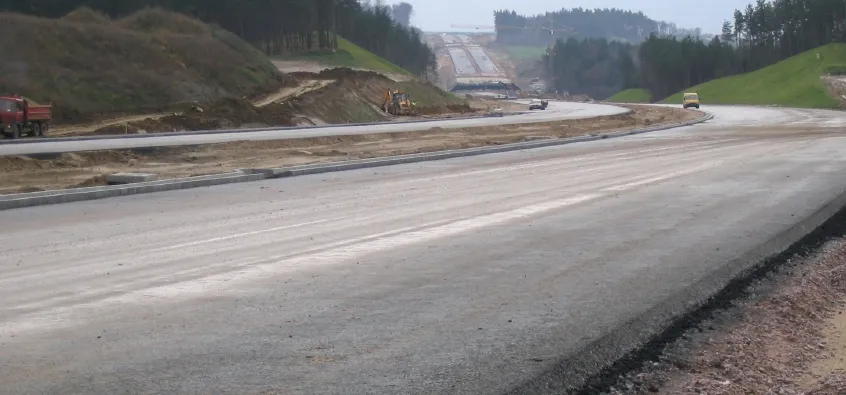The European Investment Bank (EIB) has in total granted a long-term facility of €1.070 billion for the construction of the second phase of the A1 motorway forming part of the priority trans-European transport network connecting the north of Poland (Gdansk) with the Austrian capital Vienna, via the Czech and Slovak Republics. The loan will finance the construction of a 62km section of the A1 motorway between Nowe Marzy and Torun on the basis of a design, build, finance and operate (DBFO) concession. This con
July 6, 2012
Read time: 3 mins

The 1054 European Investment Bank (EIB) has in total granted a long-term facility of €1.070 billion for the construction of the second phase of the A1 motorway forming part of the priority trans-European transport network connecting the north of Poland (Gdansk) with the Austrian capital Vienna, via the Czech and Slovak Republics.
The loan will finance the construction of a 62km section of the A1 motorway between Nowe Marzy and Torun on the basis of a design, build, finance and operate (DBFO) concession. This constitutes the extension of the motorway following the previous construction of a 90km section of the A1. The A1, linking the major Polish port Gdansk with Nowe Marzy, was co-financed by the EIB and NIB in 2005. Both sections are being built and operated by the same concessionaire: Gdansk Transport Company (GTC). The second section is expected to be completed in 2011 while the first is already open to traffic.
The mission of the EIB, the1116 European Union’s long-term financing institution, is to contribute to the integration, balanced development and economic and social cohesion of the Member States by financing sound investment. Since 1990 the EIB has signed lending contracts in Poland amounting to €17.8 billion, including the current loan. Approximately 40% has consisted of loans for the transport sector (roads, rail and airports), which faces massive investment needs.
In Poland’s road sector EIB loans have co-financed the construction of sections of the A1, A2, A4 and A6 motorways and major national roads along the Pan-European Corridors II, III and VI. In this regard, the EIB funding lowers the financing costs for the Polish State, increases the investment capacity of the National Road Fund and helps to accelerate the implementation of new motorways of prime importance for the country.
This section of the A1 lies on the TEN-T Priority Axis Project Number 25, motorway axis Gdansk-Brno/Bratislava-Vienna. It will improve the road connection between the main ports of Poland with its industrial heartland in the centre and south. The proposed motorway would serve international, inter city and local traffic demand. The motorway will compete primarily with the existing single carriageway and highly congested National Road 1 for north/south traffic while for traffic Warsaw-Gdansk the S7 expressway will be the main alternative.
The loan will finance the construction of a 62km section of the A1 motorway between Nowe Marzy and Torun on the basis of a design, build, finance and operate (DBFO) concession. This constitutes the extension of the motorway following the previous construction of a 90km section of the A1. The A1, linking the major Polish port Gdansk with Nowe Marzy, was co-financed by the EIB and NIB in 2005. Both sections are being built and operated by the same concessionaire: Gdansk Transport Company (GTC). The second section is expected to be completed in 2011 while the first is already open to traffic.
The mission of the EIB, the
In Poland’s road sector EIB loans have co-financed the construction of sections of the A1, A2, A4 and A6 motorways and major national roads along the Pan-European Corridors II, III and VI. In this regard, the EIB funding lowers the financing costs for the Polish State, increases the investment capacity of the National Road Fund and helps to accelerate the implementation of new motorways of prime importance for the country.
This section of the A1 lies on the TEN-T Priority Axis Project Number 25, motorway axis Gdansk-Brno/Bratislava-Vienna. It will improve the road connection between the main ports of Poland with its industrial heartland in the centre and south. The proposed motorway would serve international, inter city and local traffic demand. The motorway will compete primarily with the existing single carriageway and highly congested National Road 1 for north/south traffic while for traffic Warsaw-Gdansk the S7 expressway will be the main alternative.






